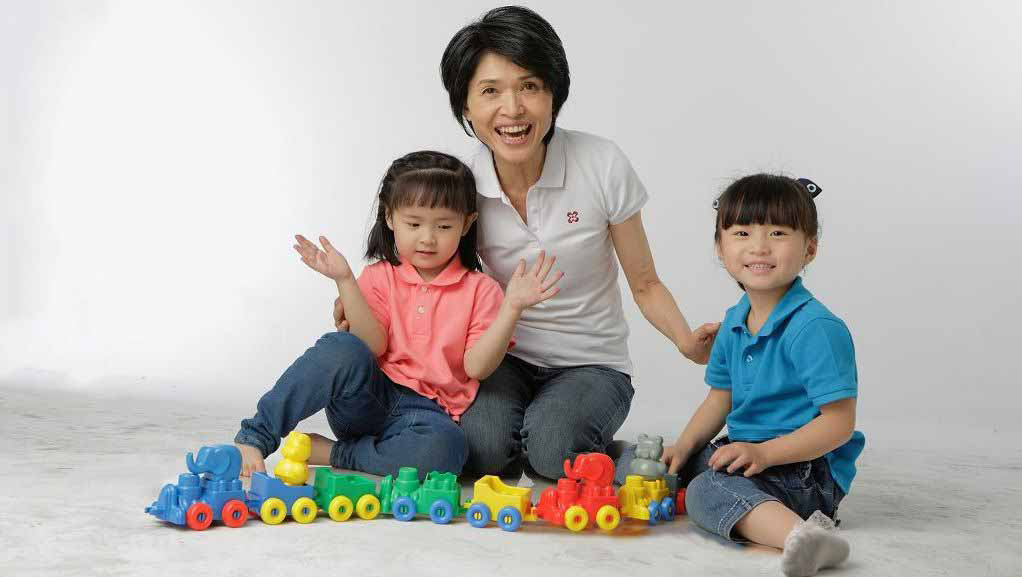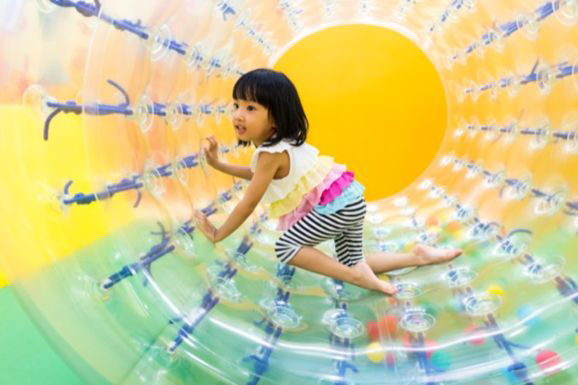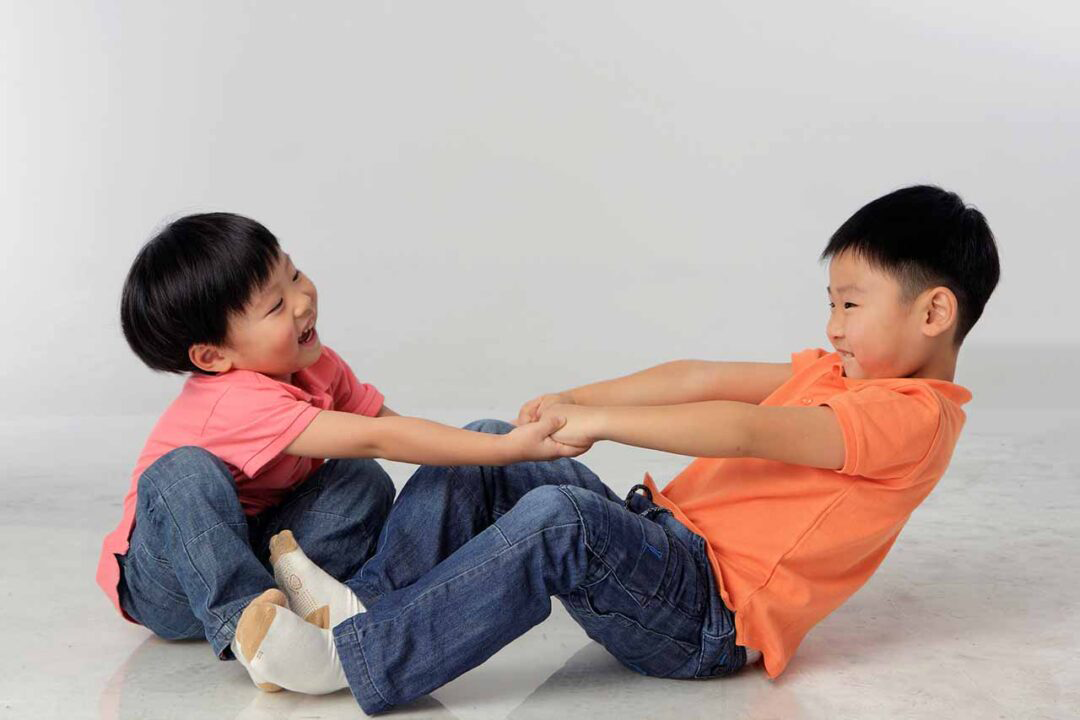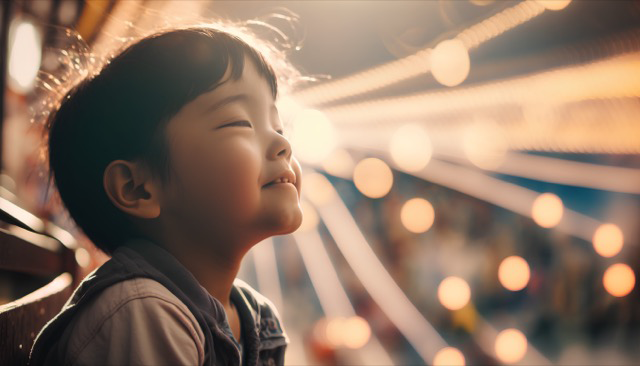感覺統合
認識感覺統合
在我們生活的環境中,前庭覺、本體覺、觸覺、視覺、聽覺、嗅覺和味覺等各式感覺刺激無時無刻不在影響著我們的大腦。大腦需要將這些感覺輸入進行整合與處理,從而產生合宜且適當的動作反應。然而,有些孩子在整合和處理這些感覺訊息方面比較弱,這可能導致他們經常跌倒、力道控制不得宜、衝動、情緒起伏大、專注力差、學習障礙、行為問題、語言發展遲緩、坐立不安、感到沮喪、具有攻擊傾向、與別人談話時會靠得過近等情況。
我的教學方法
在課堂上,我強調互動性和參與感,並根據每個孩子的具體需求和發展進程,量身定制合適的活動。我相信每個孩子都是獨特的,他們需要個性化的關注和支持。通過不斷的觀察和評估,我會調整治療計劃,確保每個孩子都能獲得最佳的成效。
創辦人吳端文老師--投身早療事業50年的感統權威

在過去的50年裡,我致力於特殊教育和早期療育事業,成為台灣早療領域的一位教母級人物。在這50年的臨床經驗中,我協助了無數的孩子不斷進步,親眼見證了他們從急需協助、缺乏與周圍互動能力的狀態,到逐漸成長、成家,並順利融入社會。
- 啟端職能治療診所創始人
- 啟端感覺統合教育有限公司執行長
- 獲獎紀錄 : 101年度中華民國職能治療師公會傑出職能治療師獎、第八屆全國發展遲緩兒童優秀從業人員早療棕櫚獎、中華民國職能治療師公會職能治療師服務獎
- 著作: 感覺統合、解放聰明的笨小孩、手能生巧、運動翻轉孩子的未來(編審)
- 雙北衛生局, 社會局, 教育局, 職能治療學/公會早期療育專業人員培訓講師暨評鑑委員
- 雙北市衛生局、社會局、教育局專聘講師
- 衛生福利部國民健康署早期療育服務指標建置計畫專家委員
- 衛生局早期療育醫療機構督考委員
- 加州大學洛杉磯分校特殊教育碩士
作為父母,我們都希望孩子能在學習的道路上順利成長,無論是學齡前的孩子還是已經上小學的孩子,家長們都不希望自己的孩子在起跑線上落後於人。然而,當我們發現孩子在學習方面似乎總是比同齡人慢半拍,或者經常記不住老師的指示,甚至連當天的學習內容都難以記住時,我們不禁會問自己,「我的孩子到底出了什麼問題?我應該如何幫助他更快、更好地學習?」

接著我要和大家分享一個感覺統合活動對成人與兒童都有幫助的案例。
感覺統合案例分享
感覺統合活動對成人與兒童都有幫助

在這個例子中,家長和她的孩子都出現了記憶力和反應速度較慢的問題。但經過感覺統合遊戲的訓練,他們顯著改善了這種情況,並提高了學習效果。
這位家長自從結婚以來一直很困擾。她感覺自己的大腦像被割開並放錯了位置,早上醒來時腦袋一片空白。未婚時,她的記憶力非常強,過目不忘。但婚後,由於家庭事務變得繁忙,她必須用一些技巧將大腦重新放回正確的位置,使她腦中所想的字和她手中寫出的字相同,讓神經傳達的指令和動作能夠協調一致。
在未進行感覺統合活動之前,她腦中想的是「上」,但手卻會寫成「右」或「下」,無論怎麼嘗試都無法控制並改善腦與手之間的配合。後來,她每天進行翻筋斗和練習換手側接球一個月,結果在頭腦和雙手之間的配合、專注力、記憶力等方面都有了極大的進步。
她的孩子在經過我設計的感覺統合運動治療後,也開始能夠完整地表達自己的意思,懂得思考時間規劃。最顯著的進步是,在本學期的國語段考中,他獲得了95分(以前頂多只有75分),數學則是99分(以前大約只有85分)。如果一天沒有進行我設計的四項運動,那孩子在情緒控制、專注力、記憶力等方面就會退步。因此,這位家長深信感覺統合訓練能夠幫助孩子在學習方面取得更大的成長和進步。
以感覺統合強化學習與認知

接著來談談五歲的潔米案例。治療前,潔米缺乏系統性的學習機會和與同儕互動的經驗,導致她的學習速度比班上的同學慢。她經常記不住老師的指令,認知方面的學習進度也相對緩慢,記憶力不佳。然而,在接受治療後,她的情況有了顯著的改善。
治療師在課堂上讓潔米參與感覺統合遊戲,這些遊戲包括每隔一小時半進行觸覺刷身體,並配合大量的前庭覺、本體覺和觸覺活動。這些活動包括青蛙跳、兔子跳、小牛耕田、在教室跑步、丟接球和溜滑梯等。潔米對這些活動非常感興趣,能夠與治療師和同學一起進行遊戲,並享受其中的樂趣。
經過一個月的訓練,潔米的情緒控制能力得到了顯著改善。她能夠更專注於課程的流程、解釋和活動中,並逐漸能夠記住治療師的指令、數字和符號等較為抽象的文字。現在的潔米,已經能夠熟練地進行加法運算,並能用注音符號和拼音自己閱讀故事書。這些成就以前對她來說是無法想像的。
老師和家長都對潔米的進步感到非常高興。潔米的經歷告訴我們,通過系統性的感覺統合遊戲和適當的教學方法,每個孩子都能夠在學習和情緒管理方面取得顯著的進步。這是一個充滿希望的故事,讓我們看到孩子們的無限潛力。
刺激前庭覺、本體覺與觸覺,改善感覺統合
從上述兩個例子中,我們可以看出,感覺統合遊戲對學齡前幼兒、學齡兒童,甚至成人都有非常好的效果。透過大量的前庭覺、本體覺和觸覺刺激,可以有效改善感覺統合不良的狀況,並且提高專注力和記憶力。因此,在幼兒的學習過程中,我們應該鼓勵適度的遊戲和運動,這樣可以幫助幼兒改善學習問題,提高學習成效。
感覺統合療程介紹
感覺統合(Sensory Integration)是由美國南加州大學的愛爾絲(A. Jean Ayres)博士於1970年代以神經生理學和神經心理學為基礎發展出的理論,也是我在兒童職能治療中常用的參考架構。其中,觸覺、前庭覺和本體覺神經系統對兒童感覺統合的發展特別重要。
課程設計
在我們的課程中,我結合了三大類感覺刺激:觸覺、本體覺和前庭覺,將治療融入遊戲中,根據孩子的具體情況提供不同形式、強度和頻率的感覺刺激,以此改善孩子的整體狀況。例如,當我發現孩子專注力不足時,這可能是因為警醒度不夠,我會安排衝跑、跳躍、在鞦韆上旋轉或倒掛等活動來增強孩子的警醒度,從而提升專注力。
觸覺系統
觸覺系統涉及孩子的觸覺區辨能力以及溫度覺、壓覺、痛覺和振動覺。我發現,觸覺刺激的輸入可以幫助孩子提升情緒穩定度、減輕緊張焦慮感,並促進精細動作能力。觸覺活動:通過不同材質的觸摸和感覺活動,幫助孩子適應不同的觸覺刺激,減少過度敏感或低反應。
前庭覺系統
前庭覺系統負責偵測頭部位置的改變,維持身體姿勢的平衡與協調。前庭覺刺激的輸入會影響孩子的視知覺、空間知覺和方向感、聽覺和語言發展、警醒度與專注力、肌肉張力及動作發展,甚至影響孩子的情緒和睡眠。前庭活動: 包括旋轉、擺盪和跳躍等,這些活動有助於孩子的平衡和姿勢控制。
本體覺系統
本體覺系統幫助孩子辨別肢體位置和肢體動作的速度、力道和方向。本體覺刺激的輸入可以提升孩子的注意力、記憶力、挫折忍受度、衝動控制和生活自理能力,並改善孩子的睡眠品質及調節孩子對前庭覺和觸覺的過度反應。本體覺活動: 讓孩子在不同的表面行走和攀爬,這有助於提升他們的身體覺察能力和力道控制。
感覺統合失調的影響
感覺統合失調影響層面廣泛,我經常遇到的相關症狀包括:
- 對視覺、聽覺、嗅覺、味覺、觸覺、前庭覺反應過度(如不喜歡被碰或被摸、不敢盪鞦韆、怕非預期的大聲音)。
- 對視覺、聽覺、嗅覺、味覺、觸覺、前庭覺反應不足(如一直轉圈圈、從高處往下跳)。
- 過動、容易分心(如坐不住、動個不停)。
- 警醒度低、注意力不集中(如丟三落四、心不在焉)。
- 活動量過低或過高。
- 人際互動和情緒問題(如易怒、固執、容易與別人衝突)。
- 轉換環境或情境有困難(如容易怕生、緊張、焦慮、害怕)。
- 動作協調度差(如常跌倒、剪紙或握筆困難)。
- 語言和聽覺發展有狀況(如口齒不清、語言發展遲緩、聽不懂)。
- 學業成就低落(如閱讀、書寫、計算有困難、不喜歡上學)。
通過我們精準的感覺統合課程,家長能夠深入了解感覺統合的概念,並與老師一起為孩子提供適當的環境,幫助孩子健康、快樂地成長。